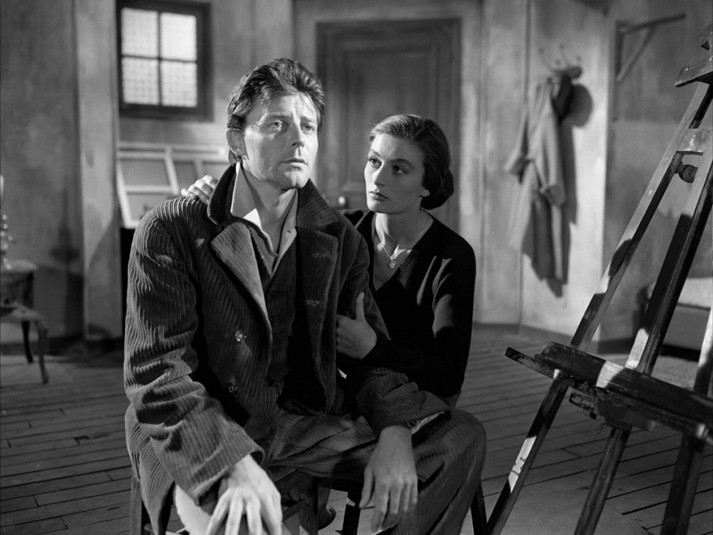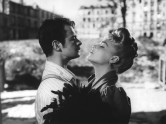
Montparnasse 19
(Les amants de Montparnasse)
With Gérard Philipe, Lilli Palmer, Gerard Sety .
France/Italy, 1958, DCP, black & white, 108 min.
French with English subtitles.
DCP source: Institut Français
Terminally ill and fated to die only months before production began, Max Ophuls selected Becker to take his place as director of an important project, a portrait of Italian painter Amedeo Modigliani starring Gerard Philipe in what would tragically be the legendary French actor’s final role. Uncannily, the film itself focused on the last year of Modigliani’s own foreshortened life before his death by tuberculosis. Determined to make the film his own, Becker completely rewrote Ophuls’ screenplay to open new dimensions that speak directly to Becker’s interest in the fragility of human relationships and the unique textures of local communities. Cast alongside Gerard Philipe as rivals for his affection are Anouk Aimée as the doomed artist’s bewitching muse and Lili Palmer as his masochistic lover. Montparnasse 19 remains a divisive film for Becker fans, with some declaring the film unable to escape its compromised origins and overpowered by the aura of its tragic star. Among the film’s admirers is Jean-Luc Godard who singled out Becker’s film as a crucial work about the artistic process.
“Montparnasse 19 is a film of fear. For in unwittingly investing Modigliani’s unbalanced mind with his own perturbation, Jacques Becker—clumsily, admittedly, but infinitely movingly—allows us to penetrate the secret of artistic creation more effectively than Clouzot did in filming Picasso at work. After all, if a modern novel is fear of the blank page, a modern painting fear of the blank canvas, and modern sculpture fear of the stone, a modern film has the right to be fear of the camera, fear of the actors, fear of the dialogue, fear of the montage. I would give the whole of the postwar French cinema, for that one shot, badly acted, badly composed, but sublime, in which Modigliani asks five francs for his drawings on the terrace of the Coupole.” – Cahiers du cinema, n. 83, May 1958, translated by Jean Narboni and Tom Milne















